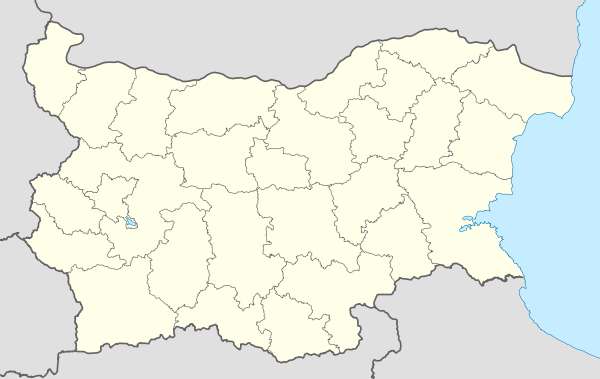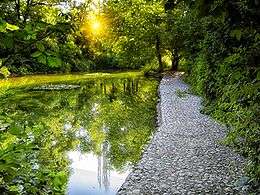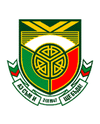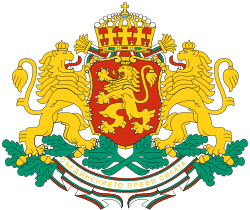Dimitrovgrad, Bulgaria
| Dimitrovgrad, Bulgaria Димитровград | ||
|---|---|---|
 | ||
| ||
 Dimitrovgrad, Bulgaria Location of Dimitrovgrad, Bulgaria | ||
| Coordinates: 42°3′N 25°36′E / 42.050°N 25.600°ECoordinates: 42°3′N 25°36′E / 42.050°N 25.600°E | ||
| Country | Bulgaria | |
| Province (Oblast) | Haskovo | |
| Government | ||
| • Mayor | Ivo Dimov | |
| Area | ||
| • City | 62.436 km2 (24.107 sq mi) | |
| Elevation | 125 m (410 ft) | |
| Population (Census February 2011)[1] | ||
| • City | 38,015 | |
| • Density | 610/km2 (1,600/sq mi) | |
| • Urban | 52,541 | |
| Time zone | EET (UTC+2) | |
| • Summer (DST) | EEST (UTC+3) | |
| Postal Code | 6400 | |
| Area code(s) | 0391 | |
| Website | Official website | |
Dimitrovgrad (Bulgarian: Димитровград) is a town in Haskovo Province, south-central Bulgaria, located close to the province capital - Haskovo. It is a newly founded settlement, and was built at the end of the 1940s. The town takes its name from the communist leader Georgi Dimitrov. The town is the administrative centre of the homonymous Dimitrovgrad Municipality. As of February 2011, it had a population of 38,015 inhabitants (municipal population - 52,541).[1][2][3]
History
The city was built in 1947 by the Communist government of the time and the brigades organized for that purpose. On the 2 September, 1947 the town's establishment was officially announced, but its construction and expansion continued intensively for several more years, as the three villages (Rakovski, Mariyno and Chernokonyovo) that existed at the place were merged to form Dimitrovgrad. The main practical reason behind the new city was to create a modern industrial centre. Of course, there was also an ideological foundation for building it. In 1970 the celebration of the national poetry festival 'Penio Penev' took place for the first time, and that tradition continues to the present. In 1980 the biennial Bulgarian theatrical poster was held for the first time. In 1987 the museum – house Penio Penev was opened.


In 1992, the monument to Georgi Dimitrov, the man after which the town is named, was removed by the authorities. This move, however, proved very unpopular with the local residents and in 2012 a plan was adopted by Dimitrovgrad city council to restore the statue and re-mount it by 2013.[4]
Tourism
Architecture in Dimitrovgrad is similar to that of the Roman Empire: it has spacious streets and large parks. It is one of the greenest cities in Bulgaria. There are three large parks with about 15 lakes, dozens of species of rare trees, shrubs and flowers, sculptures, gazebos and fountains.
Population
The population of Dimitrovgrad during the first decade after its foundation was about 34,000.[3] Since then it started growing, mostly because of migrants arriving from rural areas. This migration reached its peak in the period between 1985 and 1992, when it exceeded 50,000.[2] Since this time, and particularly during the 1990s, the population has declined rapidly due to the poor economic situation in the Bulgarian provinces that lead to a new migration in the direction of the country's capital Sofia and abroad.
| Dimitrovgrad | |||||||||||||||
|---|---|---|---|---|---|---|---|---|---|---|---|---|---|---|---|
| Year | 1887 | 1910 | 1934 | 1946 | 1956 | 1965 | 1975 | 1985 | 1992 | 2001 | 2005 | 2009 | 2011 | 2013 | |
| Population | --- | --- | --- | --- | 34,162 | 41,816 | 45,595 | 53,804 | 50,677 | 45,918 | 42,840 | 41,810 | ?? | ?? | |
| Highest number ?? in ?? | |||||||||||||||
| Sources: National Statistical Institute,[1] „citypopulation.de“,[2] „pop-stat.mashke.org“,[3] Bulgarian Academy of Sciences[5] | |||||||||||||||
Twinnings
 Darkhan, Mongolia
Darkhan, Mongolia Dimitrovgrad, Russia
Dimitrovgrad, Russia Kalamaria (Thessaloniki regional unit), Greece
Kalamaria (Thessaloniki regional unit), Greece Grosseto, Italy
Grosseto, Italy
References
- 1 2 3 (English) Bulgarian National Statistical Institute - towns in 2009
- 1 2 3 (English) „WorldCityPopulation“
- 1 2 3 „pop-stat.mashke.org“
- ↑ (Bulgarian) http://www.dnevnik.bg/bulgaria/2012/06/29/1856367_dimitrovgrad_vrushta_pametnika_na_patrona_si_v_aleia - Restoration of the Georgi Dimitrov monument in Dimitrovgrad]
- ↑ (Bulgarian) Bulgarian Academy of Sciences
External links
| Wikimedia Commons has media related to Dimitrovgrad, Bulgaria. |
- Official website of Dimitrovgrad municipality
- Portal website of Dimitrovgrad
- Website of National Community Center "Vasil Levsky 2003", Dimitrovgrad


